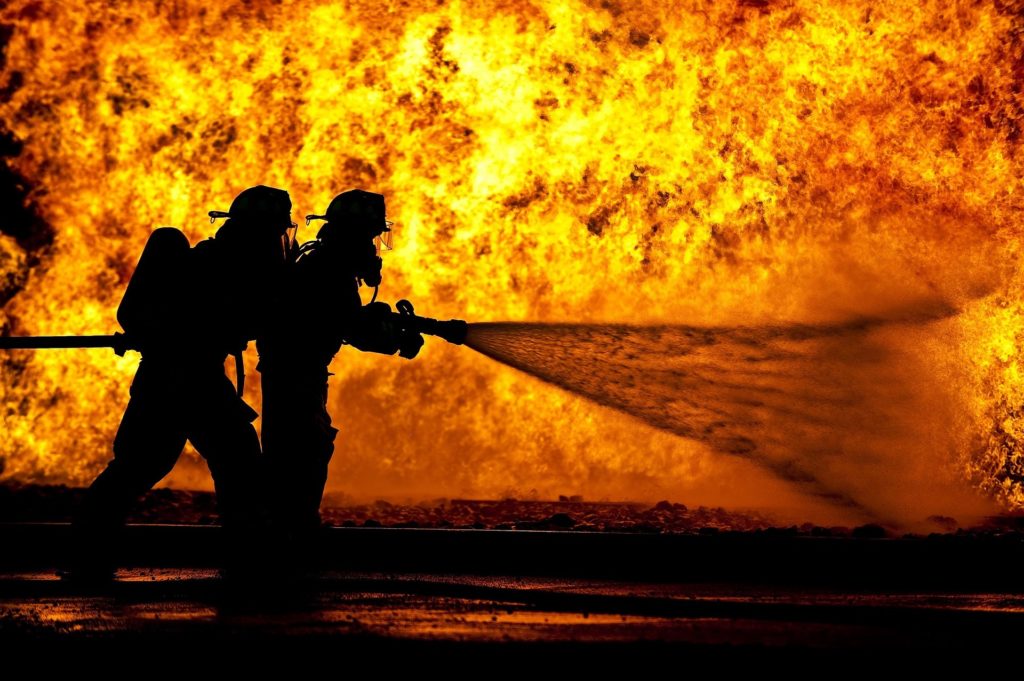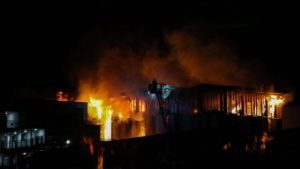On the evening of Friday 15th November 2019, a major fire broke out in a block of flats housing students from The University of Bolton. It has now been reported that the evacuation procedures put in place following the Grenfell Tower disaster may well have saved many lives, according to the Greater Manchester Fire and Rescue Service.
The Cube, as the building is known, saw 200 firefighters and 40 fire engines tackling the blaze, while students were evacuated and crews had to rescue one person using an aerial platform. Two people were treated by paramedics at the scene.
The building is managed and owned by Urban Student Life (USL), rather than the university itself.
USL worked with the University of Bolton to provide temporary accommodation and emergency supplies for those affected. In a statement given shortly after the event, the building management company said:
“Valeo USL is deeply sorry that the fire in the Cube building it operates in Bolton has displaced all of the 221 students that were resident in the building and is of course concerned about the distress and disruption that the blaze has caused to the lives of those students.
“Valeo USL’s first priority has been for the safety and security of the students who were resident in the building and Valeo USL’s on the ground team led the evacuation of the students and assisted the fire and rescue services throughout the night and today. Thankfully it appears that the prompt response of our staff and the amazing work of the emergency services has meant that the residents have remained safe.”
Cladding
Once again, the event has raised concerns over the safety of high-rise buildings and blocks of flats – an issue continuing to undergo scrutiny since the Grenfell tragedy in 2017. It would appear fears over the safety of the cladding have once again been highlighted from the five-week investigation.
While the cladding was different from the aluminum composite cladding (ACM) material used on the Grenfell Tower, Greater Manchester’s Mayor commented that the material “raises issues that will have to be addressed”, in a press conference on Saturday.
Tom Roche, a Fire Safety Engineer with over 25 years’ experience in the field, added that: “The quick spread of the fire, injuries, the need to help evacuate people and the damage caused should rightly prompt renewed concern about the performance of numerous buildings in the face of fire.
“The high-pressure laminate (HPL) cladding used on The Cube was clearly combustible. The discussions around the height of the building and whether it was within certain parameters of the building regulations guidance may be important from a technocratic perspective, but to all those watching the end result was the same; the fire clearly spread up the building. It did not matter whether it was 17m or 18m, it failed to stop the fire from spreading across its external surface, making both the property and its inhabitants extremely vulnerable to a fire.
“This failure highlights the importance of properly testing building materials for their intended use, irrespective of height. Most importantly, there is a need to ensure that those involved in designing and refurbishing buildings have a sound understanding of building and fire science. This should drive the proper selection of materials.”
Bolton Fire Investigation update
According to reports from the Manchester Evening News, investigators believe that the cause of the fire may have been the result of a discarded cigarette. They have ruled out arson and the incident is being regarded as an accident.
Investigators spent five weeks forensically examining the damaged site, and the case is set to be discussed by the new protection board established to ensure buildings clad with Grenfell-style materials are safe.
The latest news in July 2020 highlighted that the evacuation procedures put in place following the Grenfell Tower disaster may well have helped save many lives. All 217 occupants escaped, with no serious injuries. The report found: “As the fire spread, it was quickly evident that the building was failing to perform in accordance with expectations.
“The swift and successful implementation of new operational procedures for tackling fires in multi-occupied residential buildings played a key part in the saving of lives.”
The report also highlighted that the firefighters who bravely tackled the blaze did a “truly outstanding” job.
Many commentators were left questioning the numerous cuts and “years of complacency” over building safety which has left many buildings and occupants exposed to further dangers from fire.
Fire Protection Association (FPA) response
The FPA has highlighted that the incident provides a stark reminder that the problem facing UK fire safety is the result of many issues, and not just Grenfell style ACM cladding. A number of key concerns have already been raised, such as the part played by high pressure laminate (HPL) and timber cladding components on the building, the fact that combustibility bans should be based on risk of buildings rather than height, and changes to the regularity of tests being carried out on high integrity alarm systems – students commented that alarms go off almost daily, so it did not raise immediate concerns.
Jonathan O’Neill, Managing Director of the Fire Protection Association, commented: “The fires at the Bolton student block, Worcester Park in London and the Beechmere care village in Cheshire, prove we cannot be housing people in buildings made from combustible materials. This issue needs to be addressed urgently; it simply cannot wait. We urge this issue to be a priority for the new Government.”
The FPA is particularly concerned with why fire and building regulations have to solely be related to height – ‘risk is a combination of many factors, of which height is only one’.
Student responses
In the wake of the event, student leaders in Scotland have written to the Scottish Government to review all student accommodation and ensure it is safe. According to the BBC, the letter has been signed from student representatives from numerous universities and colleges, raising concerns over the safety of privately-built student halls.
With student halls taking many different forms – from high-rise buildings to privately owned rented properties – the concerns raised by representatives aren’t exactly surprising.
Keep an eye on this page for further developments and responses from the industry.
2023 Fire Safety eBook – Grab your free copy!
Download the Fire Safety in 2023 eBook, keeping you up to date with the biggest news and prosecution stories from around the industry. Chapters include important updates such as the Fire Safety (England) Regulations 2022 and an overview of the new British Standard for the digital management of fire safety information.
Plus, we explore the growing risks of lithium-ion battery fires and hear from experts in disability evacuation and social housing.

